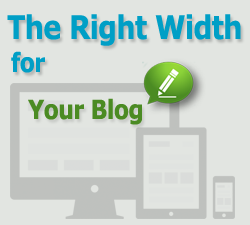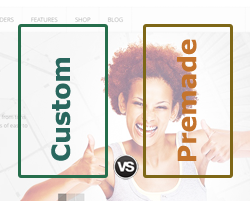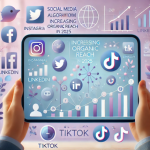A high-converting landing page is the backbone of any successful online marketing campaign. It’s the first impression your visitors get, and it can make or break your lead generation efforts. Whether you’re promoting a product, offering a service, or collecting emails, your landing page must be designed with conversion in mind. In this guide, you’ll discover the key elements that drive conversions, along with tips, advice, and real-world examples to inspire your landing page design.
Why Landing Pages Matter
Landing pages are designed for a single purpose—conversion. Unlike your homepage, which serves as a hub for information, a landing page is laser-focused on guiding visitors toward taking a specific action, such as signing up, downloading, or purchasing.
Key Elements of a High-Converting Landing Page
1. A Compelling Headline
Your headline is the first thing visitors see. It should be clear, concise, and compelling, instantly communicating the value of your offer.
Example: “Boost Your Website Traffic by 300% with Our Proven SEO Strategies”
Hint: Use power words like “Proven,” “Ultimate,” “Free,” or “Guaranteed” to capture attention.
2. Engaging Subheadline
The subheadline supports your main headline by providing additional context or emphasizing the benefits.
Example: “Learn the exact techniques top marketers use to dominate search rankings.”
3. Clear and Focused Call-to-Action (CTA)
Your CTA is the conversion trigger. It should be bold, action-oriented, and strategically placed.
<button>Get Started Now</button>
Advice: Use contrasting colors for your CTA button to make it stand out from the rest of the page.
4. High-Quality Visuals
Images and videos can significantly impact conversion rates. Use visuals that are relevant, high-quality, and support your message.
<img src=”hero-image.jpg” alt=”Increase Sales with Our Marketing Tool”>
5. Benefits-Oriented Copy
Focus on the benefits of your product or service, not just the features. Explain how it solves the visitor’s problem.
- Increase your productivity by 50%.
- Save hours of manual work every week.
- Boost your ROI with data-driven insights.
6. Social Proof
People trust other people. Adding testimonials, reviews, or trust badges can build credibility and reduce hesitation.
“This tool doubled our sales in just three months!” — Jane Doe, CEO of XYZ Company
7. Simple Form Design
If your landing page includes a form, keep it short and simple. Only ask for the information you truly need.
<form>
<input type=”text” placeholder=”Your Name”>
<input type=”email” placeholder=”Your Email”>
<button type=”submit”>Subscribe</button>
</form>
Advice: Reducing form fields can increase conversions by up to 120%.
8. Strong Value Proposition
Your value proposition should answer the question: “Why should I choose you over your competitors?” Make it clear, concise, and unique.
9. Mobile Responsiveness
More than 50% of web traffic comes from mobile devices. Ensure your landing page looks great and functions well on all screen sizes.
10. Fast Loading Speed
Page speed directly impacts conversions. A delay of even one second can reduce conversions by 7%.
Hint: Use tools like Google PageSpeed Insights to analyze and improve load times.
Common Mistakes to Avoid
Even well-designed landing pages can fail due to common mistakes:
- Cluttered Design: Too many elements distract from the main goal.
- Weak CTA: Generic buttons like “Submit” don’t inspire action.
- Slow Load Times: Visitors won’t wait for a slow page to load.
- Lack of Social Proof: Failing to build trust reduces conversions.
- Unclear Value Proposition: Visitors should know what’s in it for them within seconds.
Real-World Example of a High-Converting Landing Page
Consider a SaaS company offering a productivity tool. Their landing page might include:
- A headline like “Streamline Your Workflow in Minutes”
- A video demo showing the tool in action
- Testimonials from satisfied customers
- A brightly colored CTA button saying “Start Your Free Trial”
Expert Advice for Maximizing Conversions
- A/B Testing: Regularly test different headlines, CTAs, and layouts to see what works best.
- Heatmaps: Use tools like Hotjar to see where users click and how they interact with your page.
- Analytics: Track conversion rates, bounce rates, and time on page to identify areas for improvement.
Conclusion
Building a high-converting landing page isn’t just about aesthetics—it’s about strategy. By focusing on key elements like compelling headlines, strong CTAs, social proof, and mobile optimization, you can significantly boost your conversion rates. Avoid common mistakes, test regularly, and always put your audience’s needs first. With these tips, you’re well on your way to creating landing pages that drive real results.












